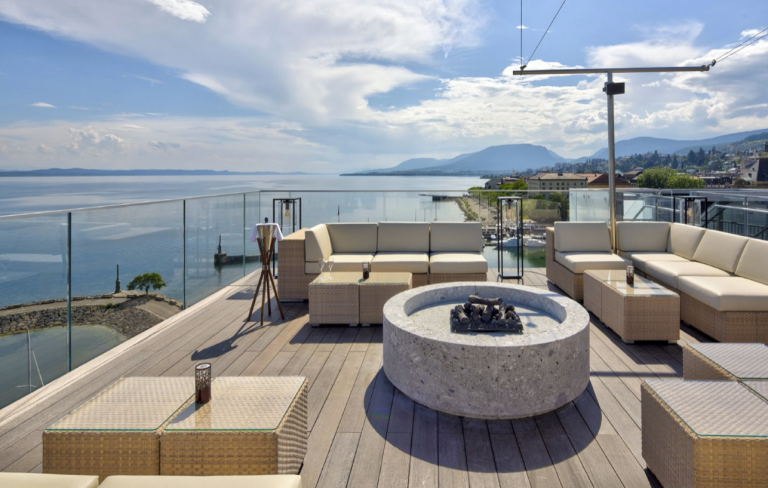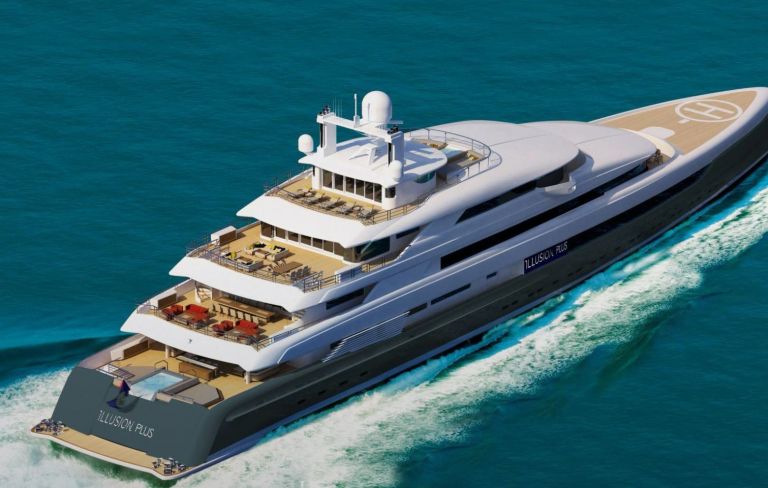Anyone who likes to live in a nice place wants a new piece of furniture every now and then. Because more and more people are concerned about the sustainability of their consumption, the demands on the producers of furnishings are also increasing. The furnishing company wohnbedarf recently took a closer look at what makes designer furniture sustainable and summarised the most important aspects. Those who take these to heart when shopping make a sustainable contribution to a more environmentally friendly future and can be all the more pleased with their new piece of splendour.
The origin is important
The main cause of global warming is the continuously increasing CO2 emissions worldwide. In order to reduce this, shorter transport routes through regional production are necessary. Products from the region or neighbouring European countries are therefore better for the environment than imported goods from the Far East.
Pieces of furniture that are designed, developed, manufactured or produced from local materials in Switzerland may use the “création suisse” label. The companies horgenglarus, Girsberger or Dietiker – all Swiss furniture manufacturers – are allowed to use this label.
The decisive factor is where the furniture is produced and where the raw materials come from. It makes a significant difference whether the raw materials are transported around the world or come directly from Switzerland.
Production with a view to resources
Many companies focus on resource conservation in manufacturing. Of course, a lot of value is placed on beautiful design in designer furniture and accessories, but as the saying goes, the “inner values” are what count. That’s why you should make sure that furniture made of solid wood comes from FSC®-certified forests.
The Zeitraum company, for example, uses only hardwoods from sustainable forests. All woods comply with the FSC and PEFC standards. Recyclability or material-efficient construction are the top priorities at Zeitraum. The furniture company &Tradition has taken a different path: their designer furniture is often made from renewable raw materials, such as bamboo or recycled plastic. In the case of the Rely Hee Welling chair by &tradition, the seat shell consists of a mixture of 100% recycled polypropylene and glass fibre.
Resources can also be conserved in the packaging. Clever designs allow for reduced and economical packaging. For example, Fritz Hansen uses chipboard for the packaging of stone and glass table tops, while the other products are packed in cardboard. Polyethylene foam (PE) is used as additional protection for the furniture in the packaging, so that all packaging material can be recycled.
When it comes to lighting, saving electricity is actually mandatory and nowhere is it easier to save energy than with your lighting. Follow these three energy-saving tips:
- Use LED lamps, which consume up to 80 percent less electricity than incandescent or halogen lamps. An investment that will translate into less electricity consumption.
- Switch off the lights whenever possible, even if it is only for a short time.
- Ensure that lamps are used in a targeted manner. A lighting concept may be advisable here.
One example: Nimbus LED luminaires save up to 70 % of energy costs. They are characterised by their excellent luminaire efficiency and their completely maintenance-free, long service life. Replacing incandescent lamps and halogen lamps with LED technology represents an important contribution to sustainability.
Durable products are always more sustainable
The longer a product offers us added value, the less it affects the environment. Genuine design classics are meant to last forever and never lose their relevance in terms of design. Every decision in the development and production process of a design classic is aimed at lasting for generations.
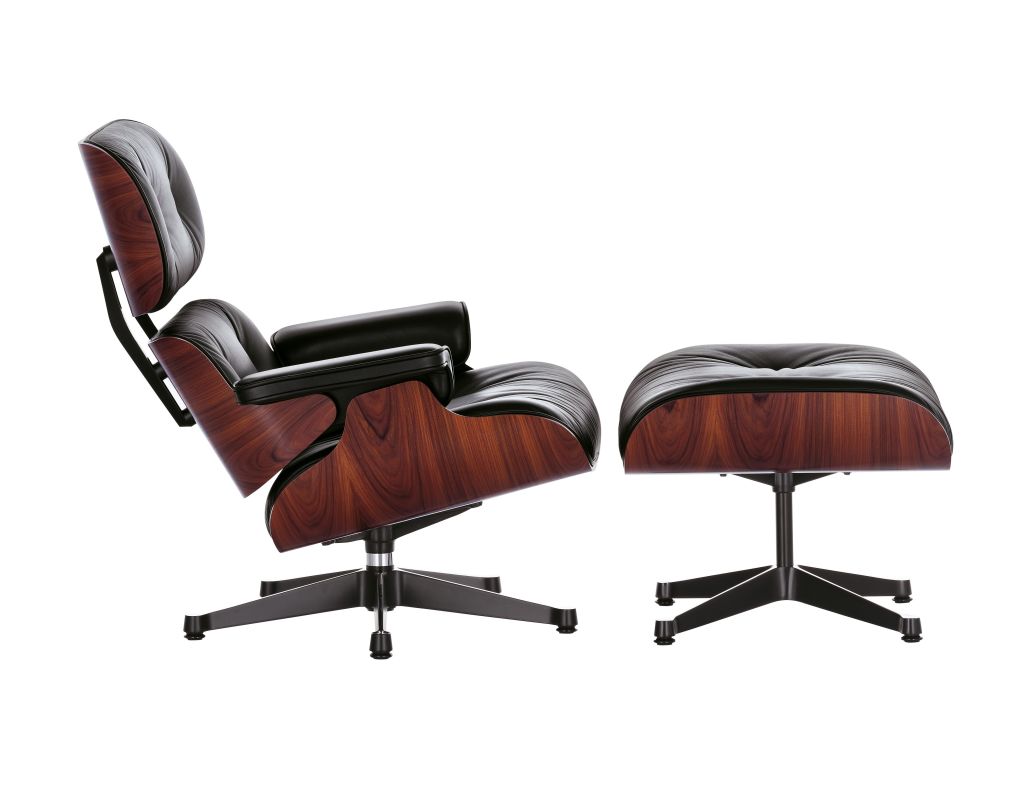
Vitra, Eames Lounge Chair; Source of photo: wohnbedarf
This uncompromising approach makes it possible to grant a 30-year guarantee on selected products, for example on the Lounge Chair or the Aluminium Chair by Vitra.
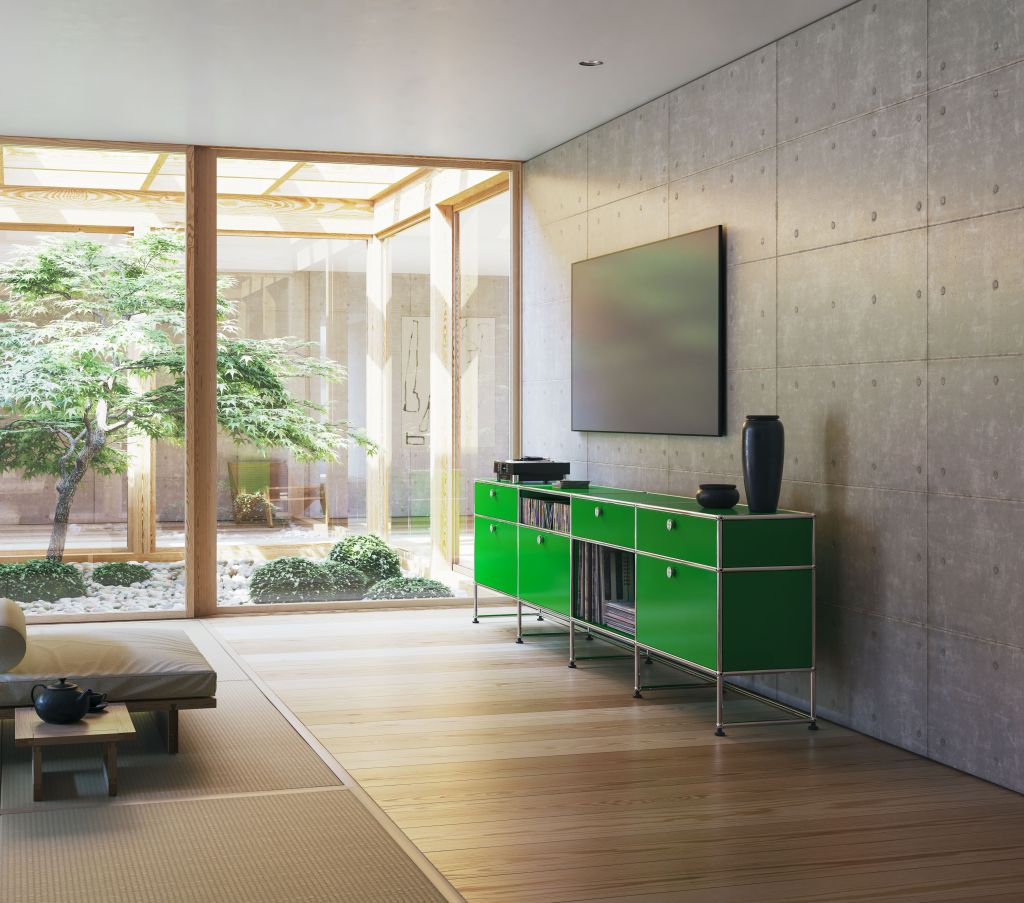
USM Haller Sideboard; Source of photo: wohnbedarf
At USM, too, sustainable development has been one of the cornerstones from the very beginning. Through the use of high-quality materials and the almost unlimited modularity, the modular furniture system from USM is undeniably durable. The changeability of the products, which can be converted, added to or reduced in size as desired, makes them lifelong companions.
Recycling and Upcycling – this is how you save resources
While recycling avoids waste by reusing raw materials, upcycling transforms materials that are no longer needed directly into new products. For example, the multi-purpose chair N02™ Recycle by Fritz Hansen is made from upcycled plastic household waste.
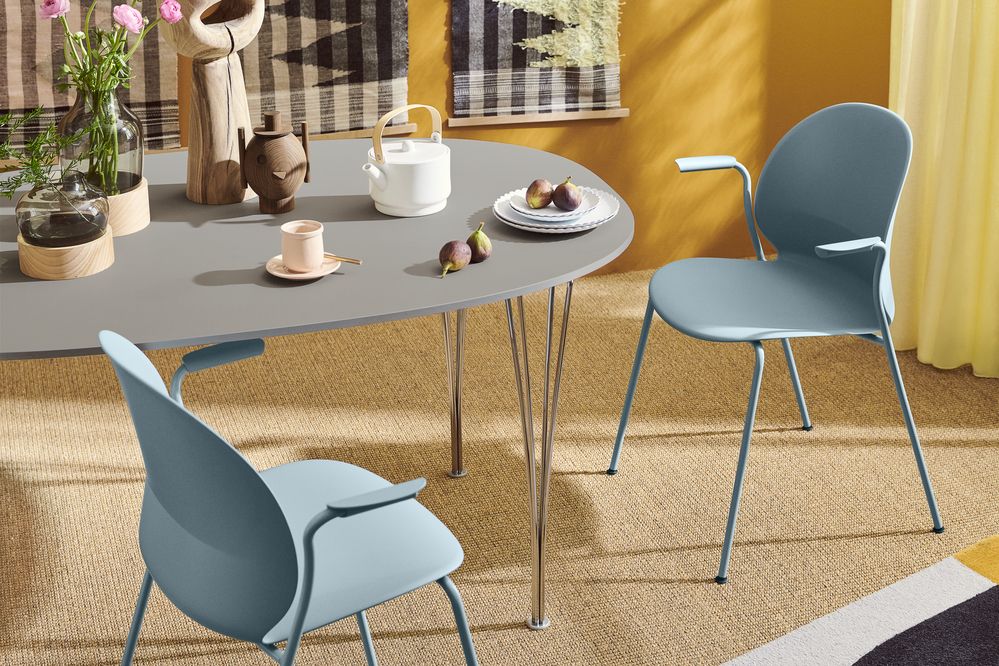
Fritz Hansen, No2TM Recycle Light blue; Source of photo: wohnbedarf
The Swiss company Vitra is also concerned with the recycling of plastic waste. The development of the classic Tip Ton RE seat is a good example. The raw material comes from household recycling collections – mainly used packaging – and this is processed into high-quality recycled material. Compared to the usual production of primary plastic, which is based on crude oil, this form of production generates 54 percent fewer climate-damaging emissions. Vitra like Fritz Hansen manufacture their seating classics from 100 percent collected plastic waste. This significantly reduces the consumption of energy and materials.
Social aspects are also part of sustainability
Craft already makes important contributions to sustainable development in many areas. Today, for example, the Lido lounger by wbform, designed in 1936, is equipped with a brick-red fabric panel, which is produced in collaboration with a hand weaving mill in the Zurich Oberland on an ancient weaving machine that was specially retrieved from a museum. The Ulm Stool by Max Bill, a Swiss quality product, is produced by the non-profit organisation Stiftung Brändi. With a total of 1800 employees, the foundation is one of the largest employers in Central Switzerland.
Another fine example is the nanimarquina label. The carpet label relies on traditional craftsmanship and natural materials in its production. Techniques such as weaving, knotting and sewing are carefully carried out by hand. The label works with organisations such as Care & Fair and supports initiatives such as the Kala Project.
The informed consumer makes conscious purchases
Even though we cannot avoid buying furnishings, think about it in advance. Inform yourself about the product before making a purchase decision. Get detailed advice about sustainable materials, origin, quality and durability, along with timeless design.
More about wohnbedarf
wohnbedarf has stood for modern living since 1931. Design classics and high-quality collections such as Cassina, Knoll, Minotti, Flexform, Thonet, Thut, Lehni, Embru or Classicon bear witness to this tradition. In close cooperation with internationally renowned architects and artists such as Alvar Aalto, Le Corbusier, Max Bill, Marcel Breuer, Ludwig Mies van der Rohe and Alfred Roth, furniture was created that is considered a classic today.
wohnbedarf is also a leader in furnishing business premises, with products from Fritz Hansen, USM Modular Furniture, Vitra, Wilkhahn or Zoom by Mobimex, among others.
More on the wohnbedarf website.
Mehr unter der Website von wohnbedarf.
